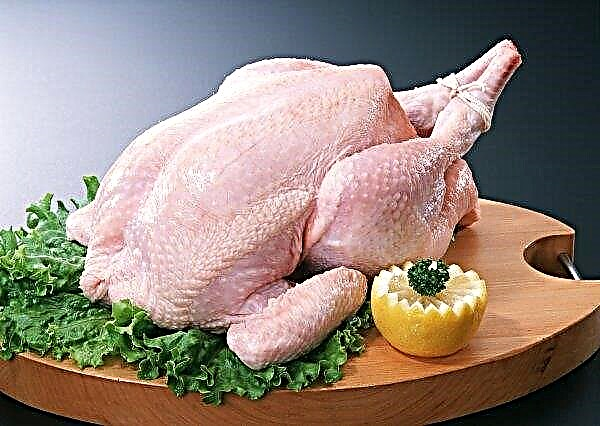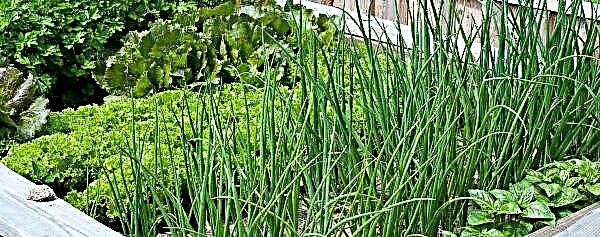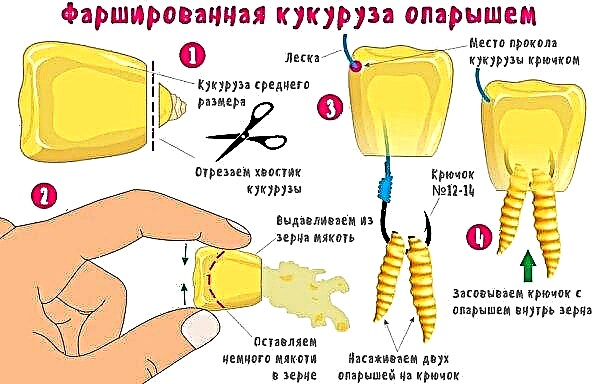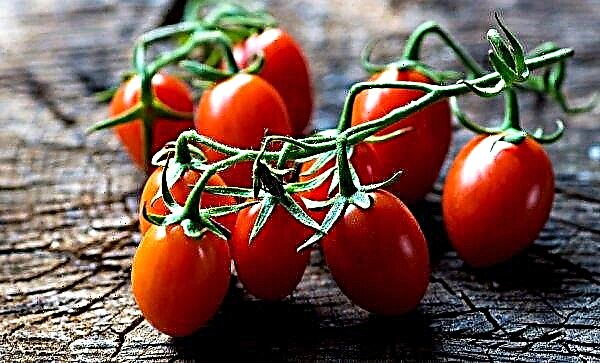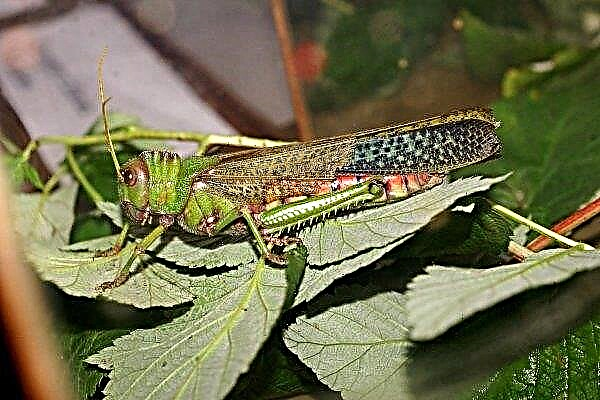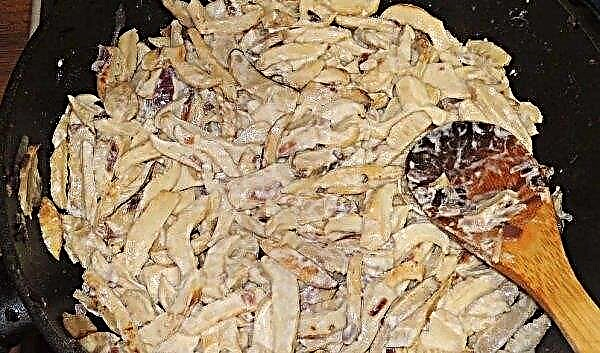Currant today is an invariable "tenant" of almost any suburban area. Gardeners love her for a whole set of positive qualities: tasty berries with a useful composition, unpretentiousness in leaving, winter hardiness, early maturity. Currant bushes are resistant to frost, but nevertheless it is important to properly prepare them for winter. This directly affects the fruiting and productivity of the plant. Preparing for the cold includes a whole range of activities, a description of which you will find in this article.
Pruning
In autumn, after the leaves fall, it is necessary to conduct a rejuvenating and sanitary pruning of the plant crown.
Armed with a well-ground secateurs or clippers, remove these branches:
- old and thick (usually 4-6 years old);
- weakened, dry;
- damaged by diseases and pests;
- injured lying on the ground;
- young but weak shoots (usually 3-4 of the most healthy and strong basal shoots leave).
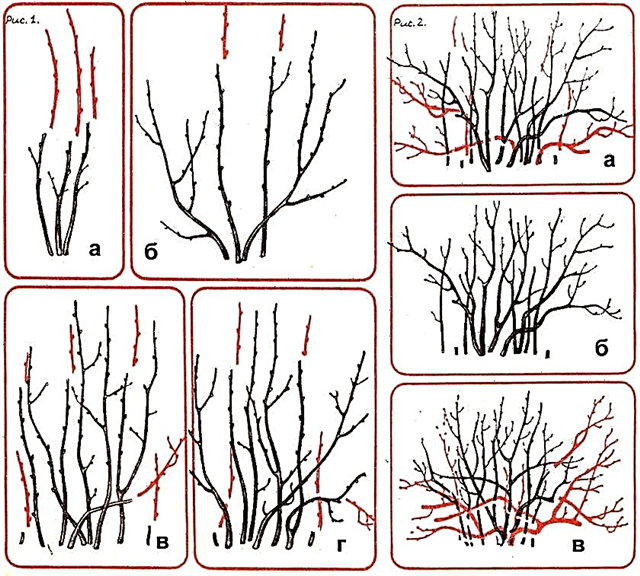 Fig. 1. Currant pruning: a - annual seedling; b - a biennial bush; c, d - shortening of shoots. Fig. 2. A bush of currant before anti-aging pruning (a), after it (b) and pruning of a neglected bush (c). Old, dry and injured branches will not bring the crop next year, and weak, thin, zero shoots may simply not survive the cold winter. In addition, this is an extra load on the root system of the plant.
Fig. 1. Currant pruning: a - annual seedling; b - a biennial bush; c, d - shortening of shoots. Fig. 2. A bush of currant before anti-aging pruning (a), after it (b) and pruning of a neglected bush (c). Old, dry and injured branches will not bring the crop next year, and weak, thin, zero shoots may simply not survive the cold winter. In addition, this is an extra load on the root system of the plant.Important! Treat the places of branch cuts with 0.5-1.0% solution of copper sulfate (50-100 g per 10 liters of water), then apply a garden var. This will prevent the rotting of sections and the penetration of pathogenic organisms.
Only strong and non-interfering branches are left on the bush so that they are spacious. With timely pruning of old branches, you will always have a young currant bush, giving a bountiful harvest every year.
Video: cutting currants in autumn
Disease and Pest Treatment
Prevention of diseases and insect pests begins with digging and loosening the soil around the bush with the removal of all weeds. The root system of the plant consists of branched, fibrous roots that lie shallow - 15–40 cm in depth. Therefore, be careful when handling the soil so as not to damage the roots. Then apply wood ash on the ground around the bush, which will serve both for prevention and as fertilizer.
Processing currants should be carried out in dry and very cool weather, so that the rains do not immediately wash away the protective equipment from the bush, and cold air will prevent the spread of bacteria. Spraying is carried out with ready-made complex preparations or folk remedies.
From the finished fugicides, there are:
- 1% Bordeaux liquid (vitriol combined with slaked lime);
- copper oxychloride;
- malathion;
- nitrafen;
- foundationazole;
- topaz.
 Use purchased drugs according to the instructions on the package.
Use purchased drugs according to the instructions on the package.
As an alternative to chemical, there are folk remedies in the form of concentrated infusions:
- garlic (chop the heads of garlic, dilute with water in a ratio of 1 to 1, insist in heat for 10 days; spray the bushes, diluting 20 ml of infusion in 10 l of water);
- tobacco (400 g of tobacco dust per 1 bucket of water, leave for a day; strain through gauze, dilute with water in a proportion of 1 to 2; add laundry soap in an amount of 50 g for every 10 liters of solution and immediately spray the plants);
- wormwood (Pour 1–1.5 L of water, 1 kg of dried grass, boil for 10–15 minutes on low heat; insist for a day, dilute in 10 L of water, add 40 g of laundry soap).
Did you know? Chopped into shavings, laundry soap is added to natural infusions and insecticides to increase their viscosity so that the solution does not drain from the leaves, and the donkey on them is well absorbed.
Spraying with the above means should not only the bush itself, but also its trunk circle. If bushes affected by a kidney tick and terry are found, they must be removed from the site, and then burned.
Top dressing
The benefit of autumn nutritional supplements for currants is that they help increase the immunity of the plant and better survive the cold season. In autumn, only potash and phosphorus fertilizers are added. It is better to refuse nitrogen-containing ones, since they are washed out with rains and meltwater and there will be no benefit from them in this case. As potash fertilizers, potassium sulfate, kalimagnesia are used.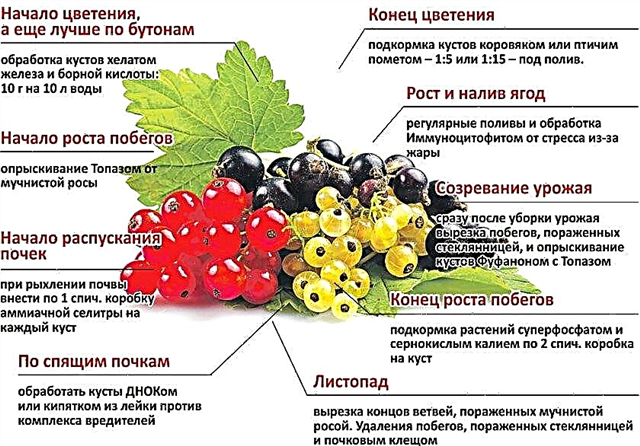 Phosphate top dressing is best done in the form of double superphosphate. Recommended usage rates are indicated on the product packaging. The amount and proportion of funds usually depends on the age of the plant, its condition, yield of the crop, as well as the amount of organic matter introduced into the soil. On average, 1 tablespoon of potash and phosphorus fertilizers dissolved in a bucket of water comes out under one bush.
Phosphate top dressing is best done in the form of double superphosphate. Recommended usage rates are indicated on the product packaging. The amount and proportion of funds usually depends on the age of the plant, its condition, yield of the crop, as well as the amount of organic matter introduced into the soil. On average, 1 tablespoon of potash and phosphorus fertilizers dissolved in a bucket of water comes out under one bush.
However, with highly concentrated substances, you should be careful: so that the plant does not receive a burn of the root system, potassium-phosphorus fertilizers are applied to the soil at a distance of at least 30 cm from the base of the bush. So that the plant has time to slow down the sap flow after applying these fertilizers, it is advisable to top dress not later than mid-October. As for natural organic top dressing, chicken litter, compost, manure (1 bucket for each bush) are well suited for currants.
They contribute to the growth and development of the plant. Wood ash is a storehouse of potassium and phosphorus, so some gardeners completely replace it with ready-made granular fertilizers or supplement them. After performing all the manipulations on pruning, treating currants from diseases and pests, applying fertilizers, it is necessary to cover the soil with a dense layer of mulch (dry grass, hay, sawdust) to maintain heat at the roots.
Video: how to feed black currants in autumn
Currant shelter for the winter
Proper shelter of the currant bush before winter cold will help protect the branches from freezing and, as a result, a break. Work begins to be carried out after the first frost. First of all, the bush is wrapped with twine or twine in a spiral, gently pulling the branches up. They do not tighten too tightly and tightly, between turns it should be about 15–20 cm. At the top, they are fixed to a knot or with a clothespin. This will prevent breaking the branches from snow heaviness.
Important! Sometimes novice gardeners cover the bushes with polyethylene or oilcloth without ventilation gaps. This can not be done in any case, because these materials do not allow air to pass through, and without its access the plant will simply die.
When the snow falls, sprinkle the base of the plant with a 10-centimeter layer of it and slightly compact. After winter finally takes over, completely cover the currants with snow. Also, for shelter, you can use a dense cloth, burlap, an old blanket, agrofibre, spruce branches - in general, what is found on the farm. This will allow currants to spend the cold season and give a good harvest in the future.
Video: preparing currant bushes for winter
Ingestion of bush branches
To protect the currant from winter drafts, professionals advise bending the branches of the bush to the ground. Then the snow will reliably cover the currants and this natural shelter will help to better transfer frosts to -35 ° С. Dumbing is done either using heavy objects, or sprinkling with earth. In the first case, about 5 bricks fall on one bush, and better than tiles or slate, placing branches in their bulges so as not to transmit the stem.
In this case, do not tilt all branches in one direction, so as not to damage the plant. It is necessary to divide the entire number of branches into uniform parts, wrap them with twine and distribute them around the bush, pressing them to the ground.
If currants are grown in an area with severe winters, where frosts reach -50 ° C, then there will be insufficient snow as a shelter. It is recommended to additionally insulate the bush with agrofibre or lutrasil, it is possible with the addition of mineral wool.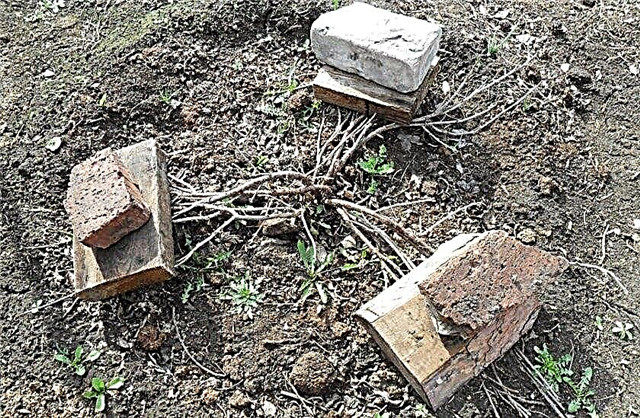
Burying branches under a layer of soil
Another universal insulation is considered to be land. It will be enough to dig in the branches (not completely), so that even in the absence of snow, the currant could tolerate severe frosts above -35 ° C. In this case, the branches are sprinkled with a 10-centimeter layer of soil, previously dividing into bundles of 3-5 pieces.
With this method, you need to be careful, because when icing the earth, the plant will lose the ability to breathe. To prevent this nuisance, the branches are first covered with a layer of breathable thermal insulation material, for example, spunbond or synthetic winterizer, and only then they are sprinkled with soil.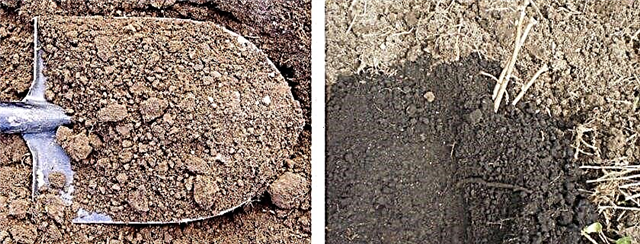
Winter currant processing
This treatment is called late winter. And in some regions it is carried out in early spring. When the snow has not yet melted, you should free the branches of the plant from the adhering snow so that it does not damage them when melting. Then, while the buds have not yet awakened, the owners of currant bushes are irrigated with hot water, almost boiling water (up to 80 ° C). This awakens the plant from hibernation, improves immunity, and most importantly - kills the kidney tick, aphids and cleanses of fungal diseases.
Did you know? A bud mite hibernates in the branches of currant, and high-temperature water signals him that heat has begun and that he is waking up. But since in winter there is still no food in the form of plant juices for the pest, and the air temperature is too low, it dies.
This method has been proven for decades. The main thing is not to forget about caution when working with boiling water: use a reliable garden watering can, protect your hands and do not heat water above 90 degrees, so as not to harm the plant.
Features of preparation in the Moscow region, the Urals and Siberia
Gardeners cultivate currants throughout Russia. Given its frost resistance, it is suitable for regions with different winters - from harsh to warm. The peculiarity of the weather conditions in the Urals is in sharp changes in temperature, so it is impossible to predict exactly when and what kind of force there will be frosts. Currants must be cooked for potentially low temperatures. In Siberia, usually long and cold winters and relatively short summers - this means that the preparation and protection of bushes for cold weather should be thorough, using all available methods. The Moscow region is characterized by an unpredictable climate due to the rather rapid movement of warm and cold air masses.
In Siberia, usually long and cold winters and relatively short summers - this means that the preparation and protection of bushes for cold weather should be thorough, using all available methods. The Moscow region is characterized by an unpredictable climate due to the rather rapid movement of warm and cold air masses.
Therefore, experienced gardeners of the Central region always take measures against unexpected frosts. Measures such as shelter with warm materials, digging up with earth, bending branches are used in areas where very cold climatic conditions simply will not allow the plant to survive.
In the southern regions, as a rule, autumn pruning of branches, feeding and prevention from diseases and pests is sufficient. Neglecting the procedures for preparing for winter cold can lead to weakening and withering of currants due to freezing of the soil and icing of the roots. Therefore, the selection of the right set of preliminary works in the Urals, Siberia and the Moscow Region is a must if you want to save the plant and collect a rich harvest of berries.


